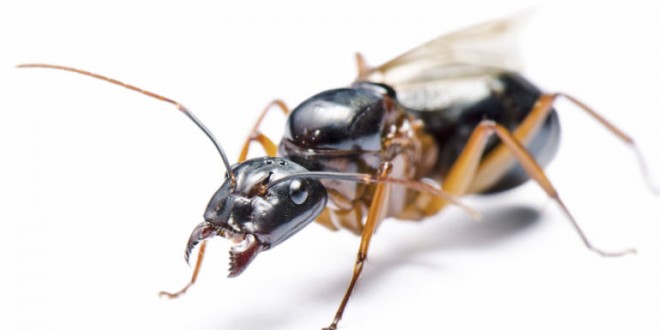Researchers at McGill University in Montreal found they could double or halve the size of the ants. The study was carried out on ants that were either genetically identical or as genetically similar as human siblings.
They believe that, by identifying a key gene for each trait and how it is affected epigenetically (by the environment), it is potentially possible to influence the degree of its expression – and so create variation in how specific traits are expressed. It’s a bit like an artist adding more or less white paint to black to create a palette of shades of gray. In effect, it is the discovery of the mechanism through which the environment interacts with specific genes, revealing environmental factors as an equal partner in determining complex traits.
A McGill team led by Profs. Moshe Szyf and Ehab Abouheif, from the McGill’s Departments of Pharmacology and Therapeutics, and Biology respectively, has clearly identified a mechanism by which epigenetic factors – how the environment affects the expression of a single gene – have an overarching effect in creating quantitative variation in these kinds of complex traits.
The researchers arrived at this conclusion by conducting epigenetic experiments on ants from the species Camponotus floridanus (better known as the Florida carpenter ant). Because there is little genetic influence in determining size variation of workers in a colony (they are on average 75 per cent related) and because their genome has already been sequenced it was possible for the researchers to focus on the effects of epigenetic factors in creating variations in size.
The enviro-genetics of a superhero: Ant Man
By increasing the degree of DNA methylation (a biochemical process that controls the expression of certain genes – a bit like a dimmer can turn a light up or down) of a gene involved in controlling growth called Egfr, they were able to create a spectrum of worker ant sizes despite the lack of genetic difference between one ant and the next. Essentially, the researchers found that the more methylated the gene, the larger the size of the ants.
“Basically, what we found was a kind of cascading effect. By modifying the methylation of one particular gene, that affects others, in this case the Egfr gene, we could affect all the other genes involved in cellular growth. We were working with ants, but it was a bit like discovering that we could create shorter or taller human beings.” — Sebastian Alvarado, the McGill PhD who is the co-first author on the study that was published today in Nature Communications
Finding the right gene to work on
“In the case of growth in ants, it was the Egfr gene which was determinant. But for other complex traits, whether they are involved in the growth of cancer cells in humans or fat cells in chickens, what we now know is that once we have discovered, in each case, the key genetic position that is affected by epigenetic factors we can then influence how much or how little of the gene is expressed with potentially very far-reaching results.” — Rajendhran Rajakumar, co-first author of the paper
“It’s a discovery that completely changes our understanding of how human variation comes to be,” says Abouheif. “So many human traits, whether they are intelligence, height, or vulnerability to diseases such as cancer, exist along a continuum. If, as we believe, this epigenetic mechanism applies to a key gene in each area, the change is so enormous that it’s hard to even imagine right now how it will influence research in everything from health to cognitive development to farming.”
Agencies/Canadajournal

 Canada Journal – News of the World Articles and videos to bring you the biggest Canadian news stories from across the country every day
Canada Journal – News of the World Articles and videos to bring you the biggest Canadian news stories from across the country every day


“I am curious as to where you diverged from the path of the scientific method and allowed your ego to intervene.”
What is really funny about this is that if the ‘scientific method’ really worked the way GR says it does, and if the parts of the ‘scientific method’ that GR has decided are invalid were really never used, there would be no science except engineering (and maybe physics – but not all branches). Nor would there be any medicine, environmental study, geology, biology and on and on and on.
Who’s the egomaniac? Talk about a candidate for the rubber room!